With their bold striping and rolling gait, the toyger can make you feel like a tiger king in the comfort of your own living room.
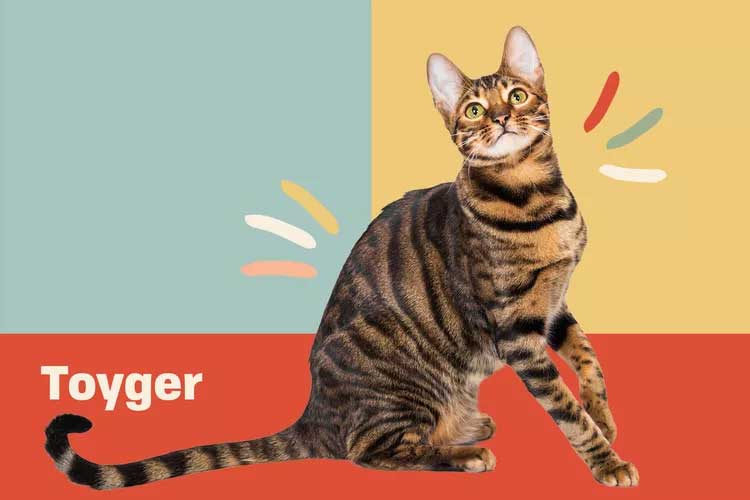
Toyger Overview
| OFFICIAL NAME | Toyger |
| COMMON NAME | Toyger |
| PET HEIGHT | 9 to 13 inches |
| PET WEIGHT | 7 to 15 pounds |
| LIFESPAN | 9 to 13 years |
| GOOD WITH | cats, children, families, seniors |
| TEMPERAMENT | affectionate, sociable |
| INTELLIGENCE | high |
| SHEDDING AMOUNT | normal |
| PLAYFULNESS | medium |
| ENERGY LEVEL | calm |
| VOCAL LEVEL | when necessary |
| COAT LENGTH | short |
| COLORS | chocolate / brown / sable |
| PATTERNS | tabby |
| OTHER TRAITS | easy to train, friendly toward humans, friendly toward other pets, friendly toward strangers |
Toyger isn't a name that beats around the bush. Without even seeing one, you know right away this cat is supposed to look like a tiny tiger. A toy tiger, if you will.
Created in the 1980s, the toyger is a cat bred specifically to replicate not only the striped markings of its jungle cat namesake, but other physical traits as well. This has resulted in a muscular, athletic cat with a rolling gait that looks like she'd be more at home in an Indian jungle than a living room. Never fear: These kitties were also bred to be friendly and social, and they love to be around their humans and other furry friends.
Appearance
As a new breed, some of the design elements are still being hammered out, but make no mistake: The toyger looks more like a full-sized tiger than any other tabby you've ever seen. But don't be fooled; there aren't actually any tiger genes in their DNA.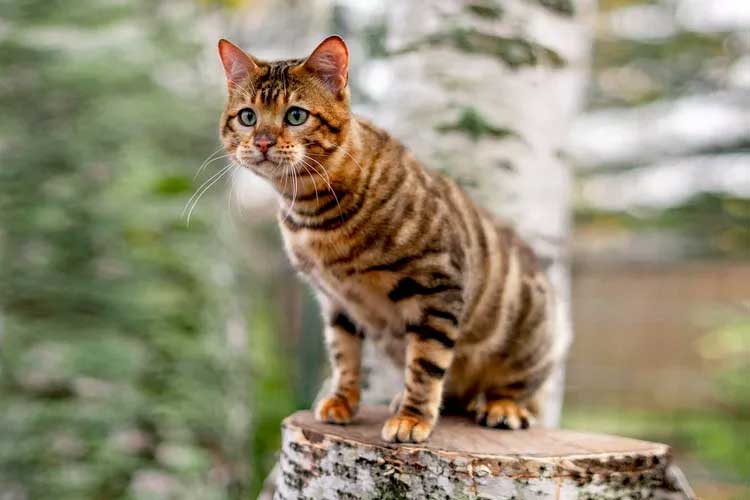
Bred from Bengals (the domesticated cats, not the wild tigers) and various striped felines, toygers resemble a mackerel tabby cat, but are a bit more glammed-up. On her head are markings that create a circular pattern, framing her face. Moving down the body, in lieu of the more or less straight, vertical striping common with tabbies, the toyer's striping is thicker, more broken, and in more random patterns. They're coupled with thick, horizontal striping on the legs, with a black tail tip and feet, and a white underbody. Just like their jungle inspiration, every toyger's markings are unique to that particular cat. And underneath those stripes is a gorgeous golden-orangey color.
In addition to the coat markings, toygers have heavily muscled frames and long, low-slung torsos. They also have big-boned, high-set shoulders, which help give them that familiar, rolling gait of the large wild cats. The typical toyger stands at 9–13 inches tall and weights between 7–15 pounds.
Temperament
Toygers are very intelligent cats who enjoy being challenged and stimulated by their humans, and can even be taught tricks (such as how to play fetch) or how to walk on a leash with relative ease.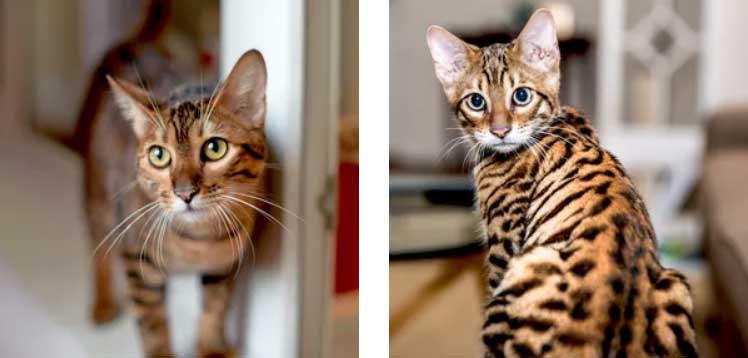
Along with looks, toygers have been bred to be laid-back, friendly companions. Kirsten Kranz, director of Specialty Purebred Cat Rescue, says their personalities are "Bengal-like," but, "not quite as wild as the typical Bengal."
"Bengals on the whole tend to be more independent and busy," Kranz says. "They can be challenging to people new to cats or who have not had very active cats. However, with the integration of domestic genes into this variation, [toygers] may be easier."
Though they might not be as active as their Bengal cousins when it comes to exploring or climbing, toygers still have an eye for adventure—as long as their human is by their side. Instead of prowling on her own, she tends to prefer to stick fairly close to her people, according to the Toyger Cat Society, and is more likely to want you to play with her rather than entertain herself.
Living Needs
Toygers like to be on the go, so they'll need plenty of outlets for their ample energy, be it a box of toys, a scratching post, or something to climb on. For some extra physical and mental stimulation, train your toyger to walk on a leash and take her on walks.As social cats, toygers get along well with other cats and dogs—in fact, they might prefer if they weren't an only fur child. Toygers' playful personalities also makes them a good match for kids, whom they can run around the house with.
Care
As beautiful as those tiger-like coats are, toygers will shed their fur all over your couch, clothes, and carpet. Weekly brushing should keep most of the cat hair under control. Plus, it's a good way to bond with her!Though some people might think cats don't need as much of the one-on-one time dogs crave, this isn't true—especially for the social toyger. If you leave her alone for extended periods of time, she can develop separation anxiety and you might come home to claw marks on your couch.
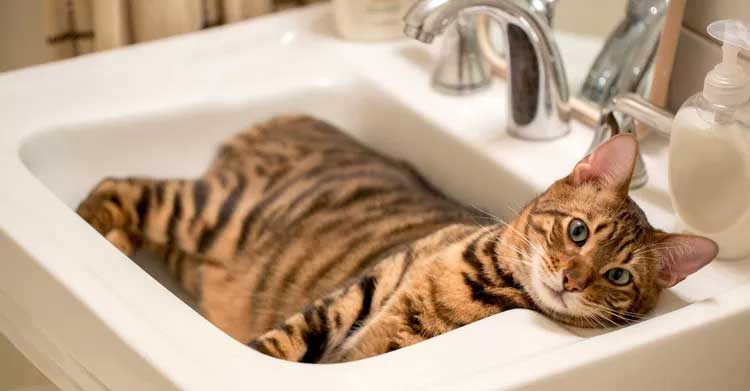
Health
Because toygers are such a new breed, it's difficult to say what, if any, health concerns are specific to these cats. Getting them checked for standard "cat things" such as patellar luxation and feline infection peritonitis will be important, and there's some evidence to suggest toygers are more susceptible to heart murmurs as well."The most common thing we see in cats as far as disease is kidney disease," says Michelle Beck, DVM, CCRT, CVA, of the Backlund Animal Clinic in Omaha, Neb. "That's really just across the board in cats. Kidney disease and heart disease are things that vets know to check all cats for, just as a matter of course."
"Cats by the age of 10, almost 70 percent of them have arthritis somewhere in their body," she continues. "Cats are very good at hiding their pain."
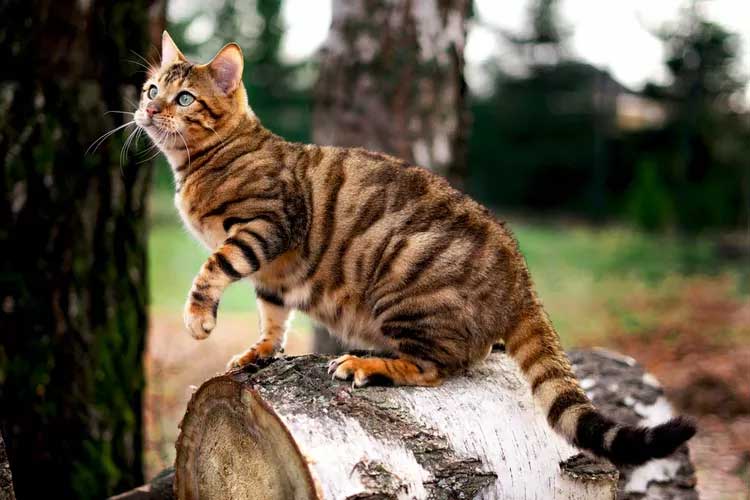
That ability to mask pain—especially in breeds that aren’t well-known for having specific health issues—can cause a lot of cat owners to forego things like routine vet visits or preventative care.
"It's not that we don't have great care available for cats," Beck says. "It's just that we don't see a lot of cats. If they're an indoor cat, they're not exposed to a lot of disease, and for outdoor farm cats, those cats tend to be left alone as long as they're good mousers."
Kranz says toygers can potentially have the same health issues as Bengals, given their shared genes. This includes, along with heart disease, eye disease and anesthetic allergies.
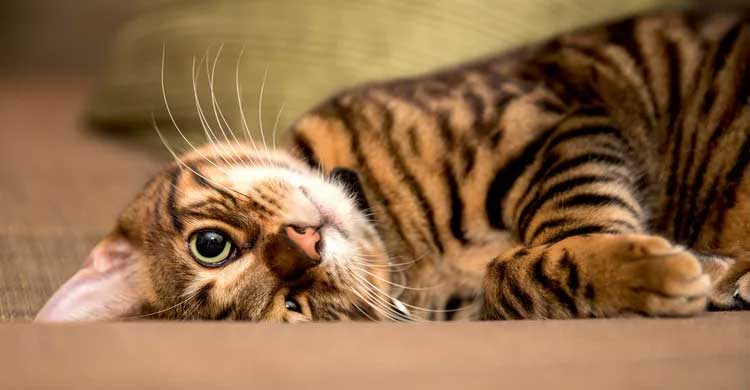
History
Created by American breeder Judy Sugden in the 1980s, the toyger was bred specifically to mimic the stripes of a Bengal tiger. A long-time fancier of mackerel tabby cats, Sudgen noticed a kitten from one of her tabbies had a unique spotted pattern on her temple —an area normally devoid of markings in tabbies, according to The Governing Council of the Cat Fancy.Sugden then began an experiment to see if she could more accurately mimic a tiger's stripes, using that cat along with a street cat with a unique spotted face she imported from India. Along the way, she mixed in breedings with various unpedigreed short hairs with striping patterns she liked, as well as domestic Bengal cats (a breed created by her mother, Jean Mill). The toyger was accepted for registration by The International Cat Association, and they were granted full recognition in 2007.
Fun Facts
The toyger is still a relatively rare cat breed, thanks in large part to being so new. As of 2020, there are fewer than 500 toygers and just 19 breeders registered with TICA.A toyger named Pippa boasts an Instagram account with more than 30,000 followers—she even has her own publicist.